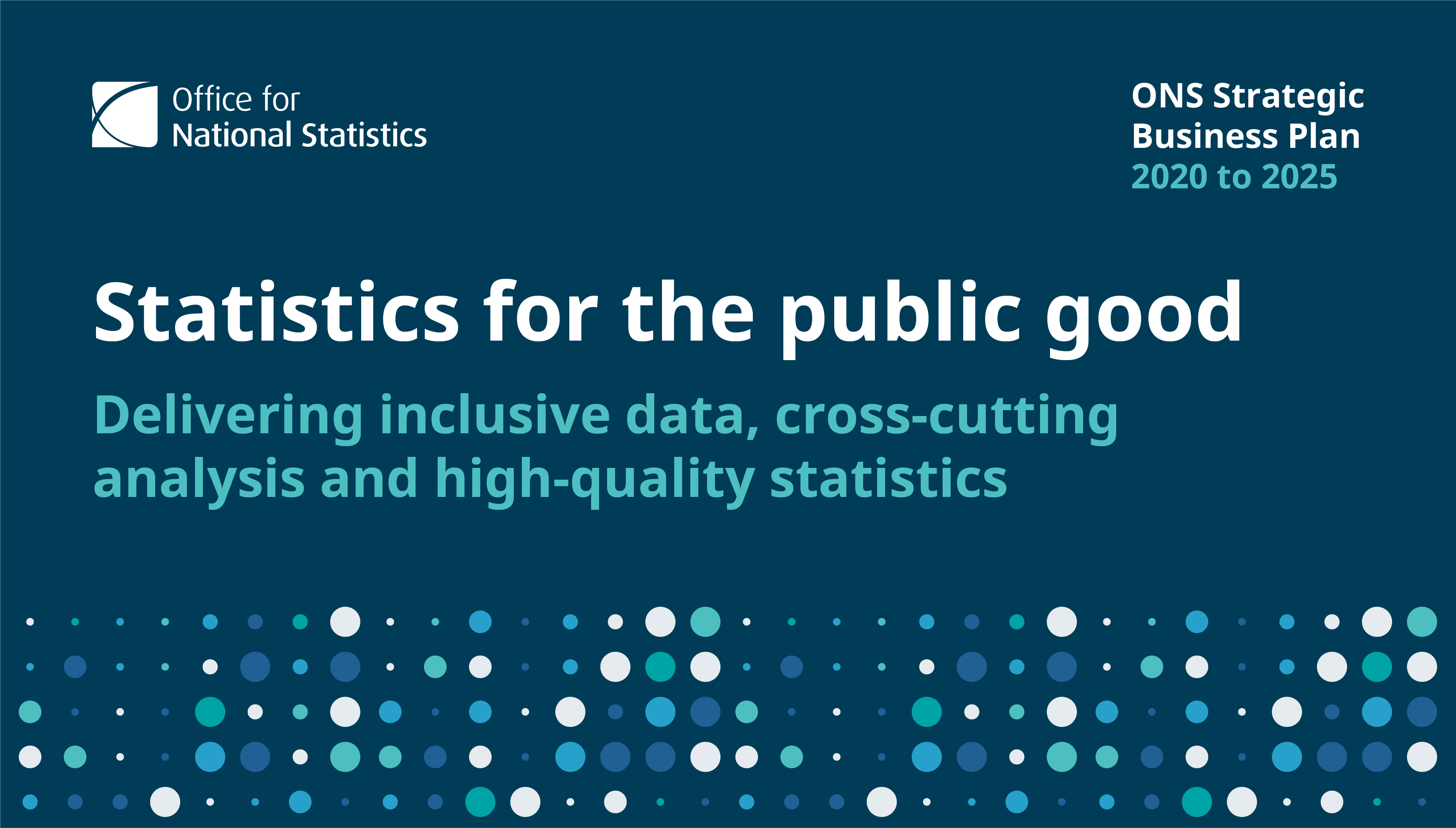Annex B: Monitoring Evaluation and Benefits
Our ONS Theory of Change approach provides a framework for describing the outcomes and impacts, and the plans for achieving them. Moreover, it ensures strategic alignment, identifies strategic benefits, aids in the development of plans to evaluate impacts and benefits and supports clear communication to our stakeholders. The process draws upon our existing evidence base, discussion with colleagues, and consultation with potential beneficiaries and stakeholders.
The benefits of ONS’s work will be monitored on a yearly basis, whilst our transformation programmes will run their own Monitoring and Evaluation at appropriate timings for their specific milestones. This approach allows ONS to link spending decisions even more closely to real-world outcomes for citizens and drive greater accountability and improved delivery.
ONS continues to work with the HM Treasury Evaluation Task Force to learn and drive continuous improvements in the way programmes are evaluated in order to inform decisions on whether they should be continued, expanded, modified or stopped. Our evaluation processes test whether our activities and initiatives have achieved their impacts and outcomes, and optimised our identified benefits. It ensures that we capture how we increase efficiency and deliver for our stakeholders’ statistics for the public good.
Regular monitoring of the Accountability Framework provides an organisational “health-check” against the strategic objectives, while monthly portfolio delivery confidence is determined by an assessment against programme milestones, risk, benefit, finances and resources.
By delivering the Business Plan we will realise wide-reaching benefits for the ONS, the GSS, wider Government and society. All the deliverables (captured as AFOs) within this plan benefit the ONS or its key stakeholders in the context of the strategic objectives that they relate to. These benefits aggregate up to the eight Strategic Benefits below which have been benchmarked against the high-level benefits of other National Statistics Institutes.
Radical
- Strategic Benefit (SB) 1 – To strengthen the insight of public and policymakers through improved analysis of social and economic challenges in support of the design and evaluation of targeted policy and services.
- Strategic Benefit (SB) 2 – To produce a more inclusive narrative on economic and social trends, which the public and policymakers can trust and use for collaboration on policy development, evaluation and scrutiny.
Ambitious
- Strategic Benefit (SB) 3 – To provide better quality, more accessible, timely and complete statistical outputs in priority areas which drive decision-making by policymakers, scrutiny, and optimisation of public services, while reducing the costs and time for policymakers and the public to utilise the data.
- Strategic Benefit (SB) 4 – To enhance the reputation of the UK’s statistical system with statistical outputs satisfying quality requirements of the Code of Practice for Statistics, while using more complex datasets, adopting new methods and increasing the value of outputs to stakeholders.
Inclusive
- Strategic Benefit (SB) 5 – To improve trust in ONS statistics by working across the statistical system to address underrepresentation of communities in data used for decision-making. This includes improving the trust of UK citizens in our products and services as the country continues to change.
- Strategic Benefit (SB) 6 – To improve the impact, productivity and diversity of the ONS by ensuring more staff feel the ONS is a great place to work, learn and innovate.
Sustainable
- Strategic Benefit (SB) 7 – To improve access to and efficient usage of government’s data, while enhancing security, ethical usage and facilitating evaluation of outcomes.
- Strategic Benefit (SB) 8 – To continuously improve and innovate our systems, technology and processes to drive resilience, efficiencies and reductions in our environmental impact, while meeting the changing requirements of the Government Statistical Service and Government Analysis Functions.
The high-level breakdown below helps assess the progress of the Strategic Benefits by assessing the progress of the AFOs that contribute to them. Further research will be conducted to identify how these benefits can be measured, initiated largely from the portfolio approach of the biggest programmes that ONS is delivering.
Back to top
